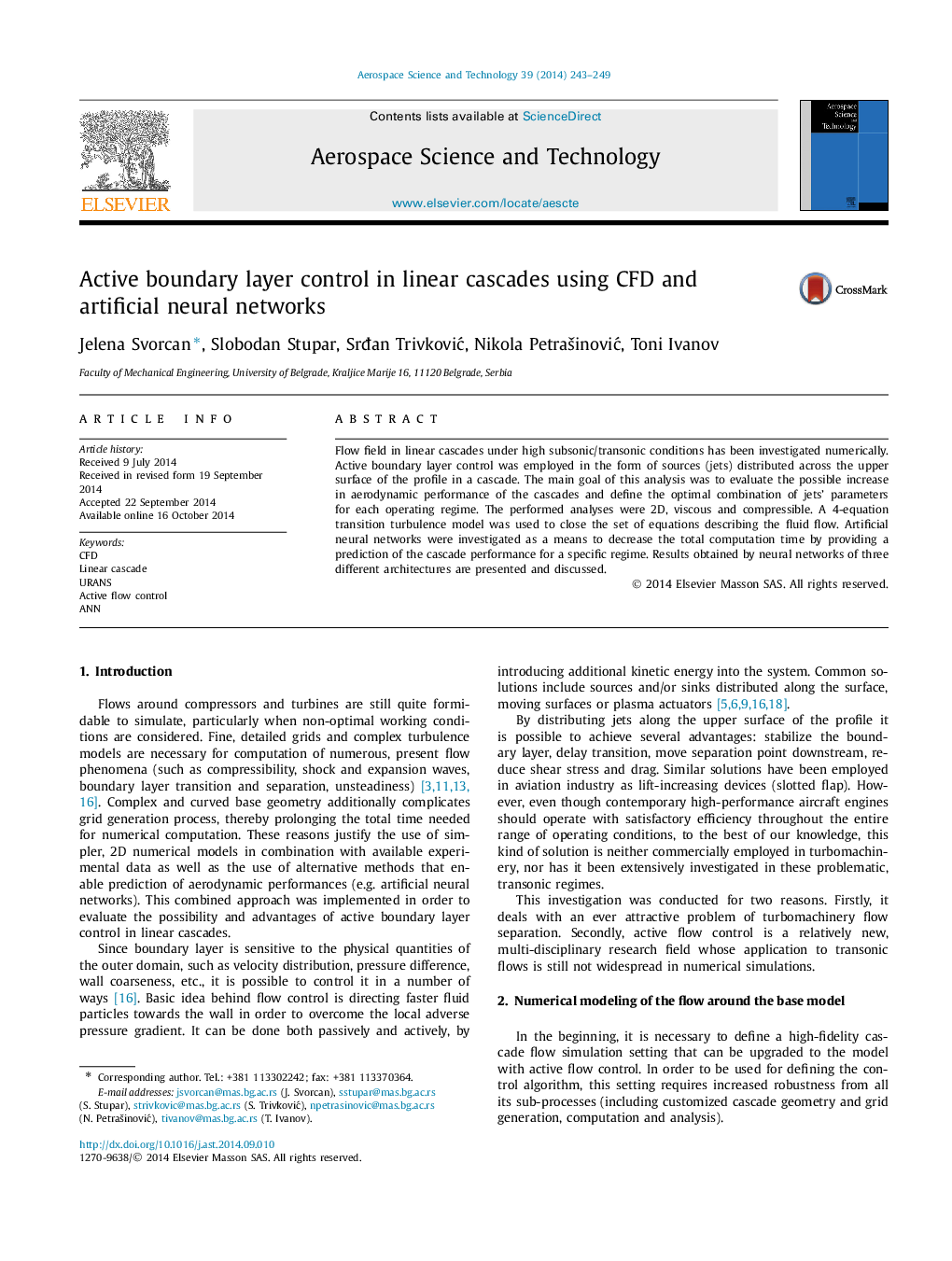| Article ID | Journal | Published Year | Pages | File Type |
|---|---|---|---|---|
| 1717975 | Aerospace Science and Technology | 2014 | 7 Pages |
Flow field in linear cascades under high subsonic/transonic conditions has been investigated numerically. Active boundary layer control was employed in the form of sources (jets) distributed across the upper surface of the profile in a cascade. The main goal of this analysis was to evaluate the possible increase in aerodynamic performance of the cascades and define the optimal combination of jets' parameters for each operating regime. The performed analyses were 2D, viscous and compressible. A 4-equation transition turbulence model was used to close the set of equations describing the fluid flow. Artificial neural networks were investigated as a means to decrease the total computation time by providing a prediction of the cascade performance for a specific regime. Results obtained by neural networks of three different architectures are presented and discussed.
